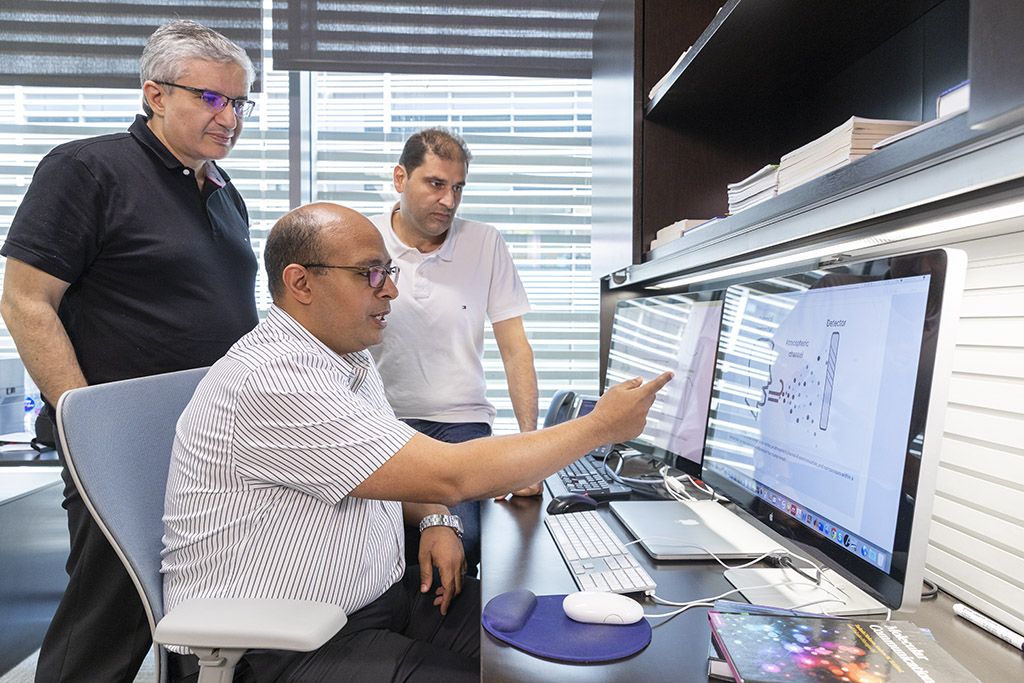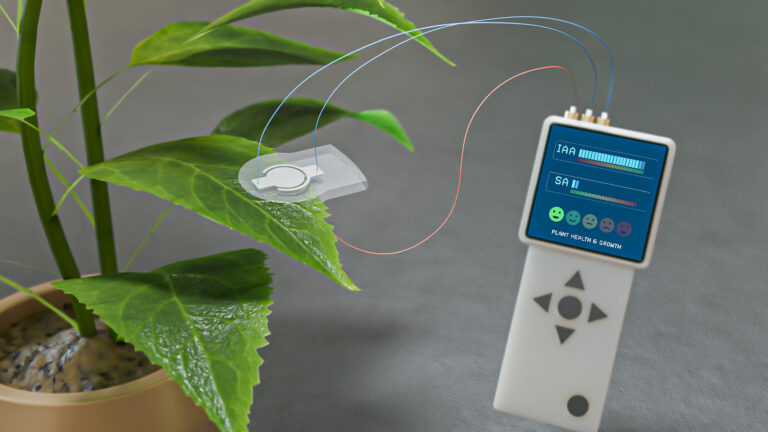Computer Science | Electrical Engineering
A breath of fresh information to help diagnosis
A communications concept could pinpoint a person infected with a deadly, contagious virus in the middle of a crowded airport.

The KAUST team are constructing a communication system using inhaled and exhaled breath, where the information is carried in molecules. 2019 KAUST
Human breath carries a breadth of information, and KAUST research scientist Osama Amin has partnered with KAUST’s Mohamed-Slim Alouini and Basem Shihada and colleagues Maryam Khalid and Sajid Ahmed at Information Technology University, Pakistan, to harness that information.
Ever since the late 18th century, scientists and inventors have been devising ways to enhance human telecommunication from the telegraph, the telephone, the mobile phone and now the Internet. In more recent years, there has been a hype around multidimensional media. Demand for this type of next-generation media has prompted researchers to investigate ways to add other senses, such as smell, touch and taste, to the traditional sound and sight senses.
Scientists have already found ways to extract information about the human body from breath. The breathalyzer, which estimates blood-alcohol levels, was invented in the 1950s. More recently, clinicians have been using breath samples collected from patients to detect viruses, like human influenza, or even to diagnose cancers, like breast and lung tumors. Almost 1,000 volatile organic compounds have so far been identified in healthy human breath, which vary depending on health, age, diet, sex, body fat, height and lifestyle.
The team envision an even broader concept. They have already designed a system architecture that can theoretically detect a person infected with a virus from the midst of a crowded area, like an airport.
“Our idea is to construct a communication system using inhaled and exhaled breath, where the information is carried in molecules,” explains Amin.
Constructing such a breath communication system will open the door to a new generation of wireless body networks, he explains. These are the communications systems used by medical practitioners, for example, to wirelessly monitor health using wearable and implanted sensors that can communicate information to a remote device.
A breath communication system won’t replace this sort of setup, but it can offer an even larger degree of freedom for real-life applications, such as those needed to monitor patients under quarantine.

Osama Amin discusses the system architecture with advisors Mohamed-Slim Alouini and Basem Shihada (back).
© 2019 KAUST
The team is now establishing multidisciplinary collaborations with experts in many fields to define the best communication channel models that can be used for this approach. They are asking the questions—What kinds of information can be exchanged? What types of molecular compounds would be introduced into the system to interact with the human body? What types of sensors and detectors are needed to send and receive information? And what security and privacy concerns need to be addressed?
The team is also using the information that can be compiled from exhaled breath to teach machine learning algorithms how to monitor human health, measure physical activities, and even monitor a person’s psychological status, says Amin. These algorithms could then be used together with sensors in future cell phones, he says. “Just like we’re training cell phones to recognize signatures, voices and people’s faces; breath training could be used to identify individuals and to monitor their overall state of wellbeing,” says Amin.
References
-
Khalid, M., Amin, O., Ahmed, S., Shihada, B. & Alouini, M.–S. Communication through breath: Aerosol transmission. IEEE Communications Magazine 57, 33-39 (2019).| article
You might also like

Bioengineering
Sensing stress to keep plants safe

Computer Science
Sweat-sniffing sensor could make workouts smarter

Electrical Engineering
New tech detects dehydration by touching a screen

Computer Science
A blindfold approach improves machine learning privacy

Electrical Engineering
A new interface for efficient electronics

Electrical Engineering
Artificial neurons enable neuromorphic computing with light

Computer Science
AI tool maps hidden links between diseases

Bioscience




